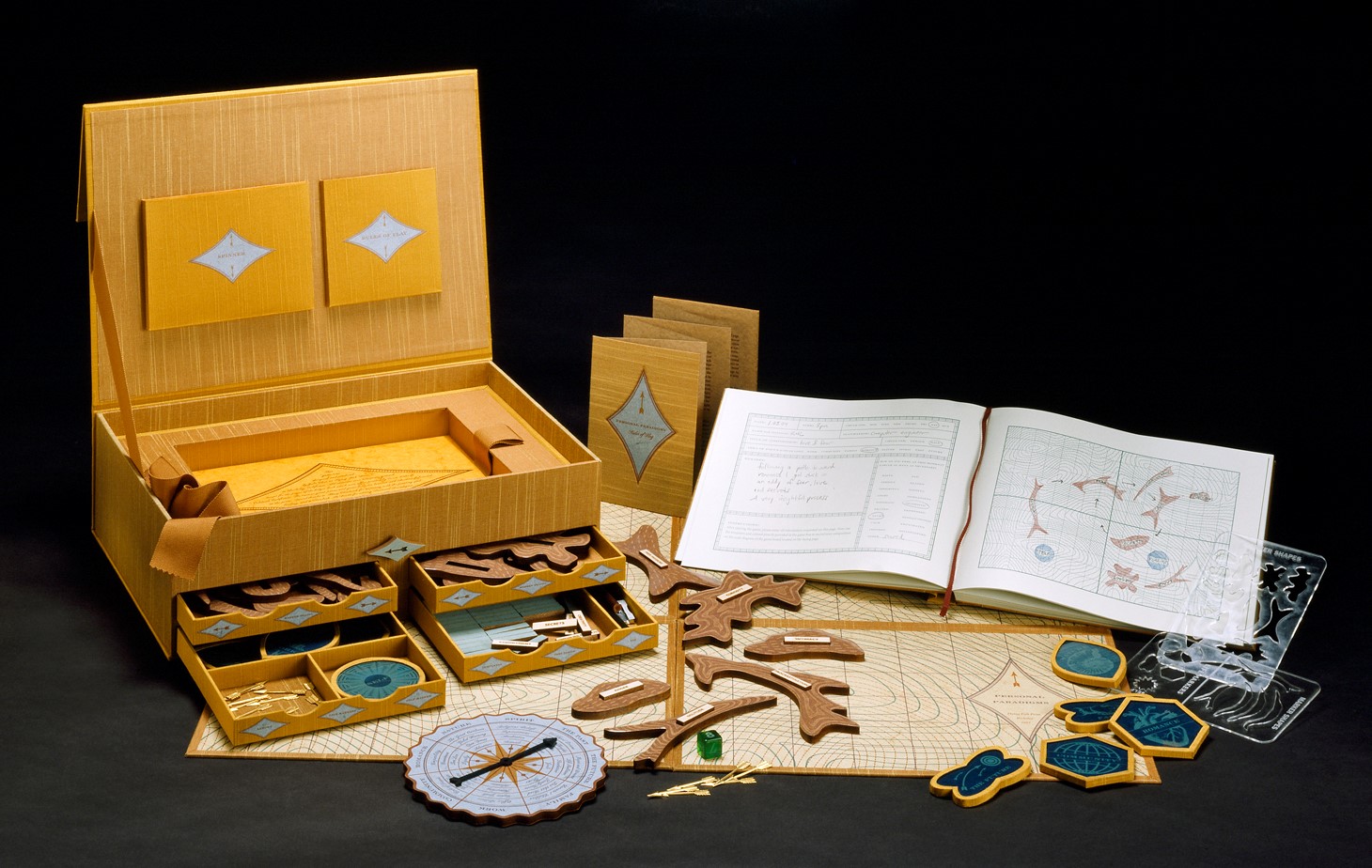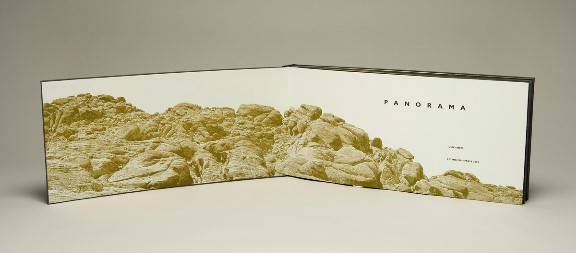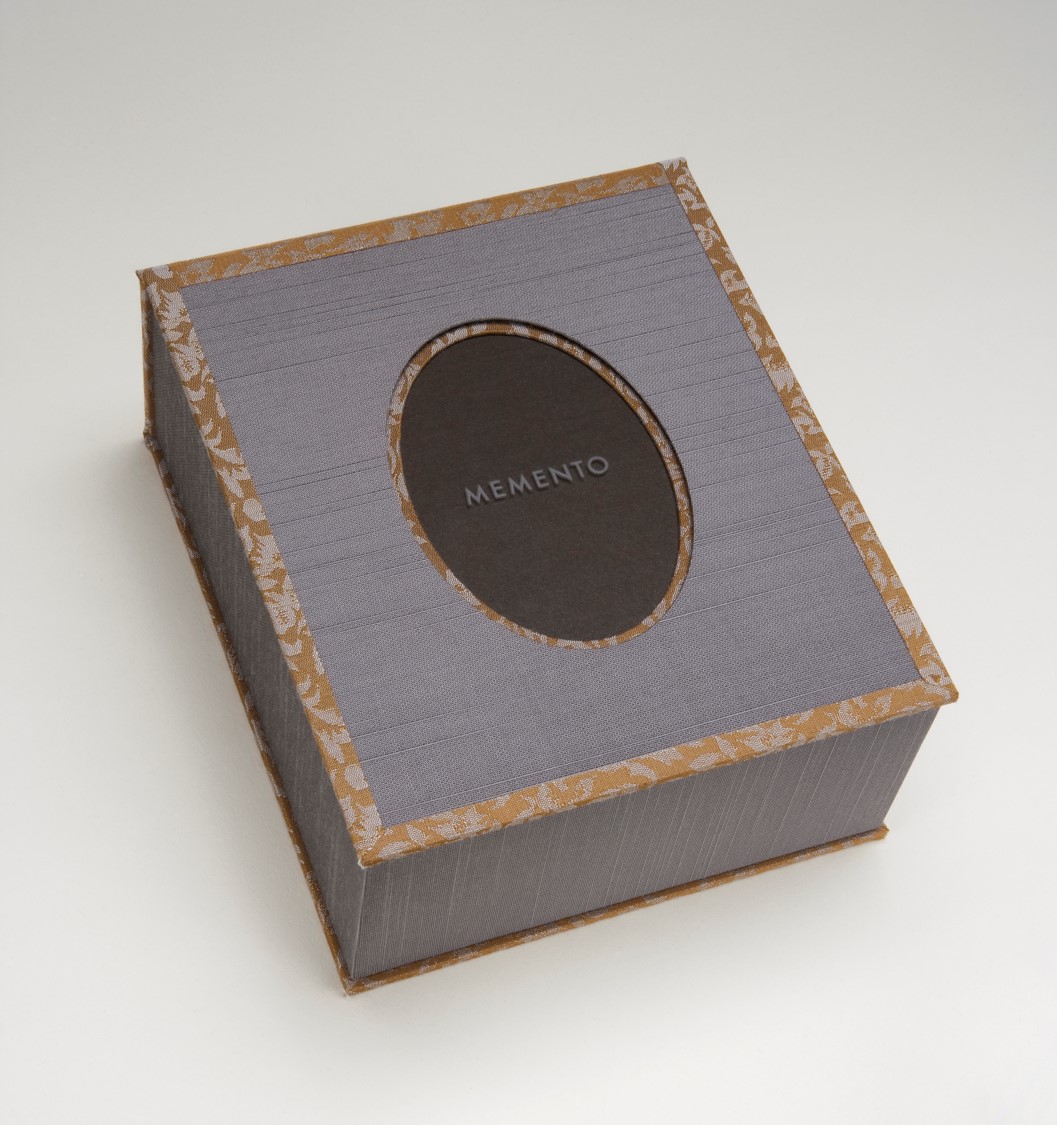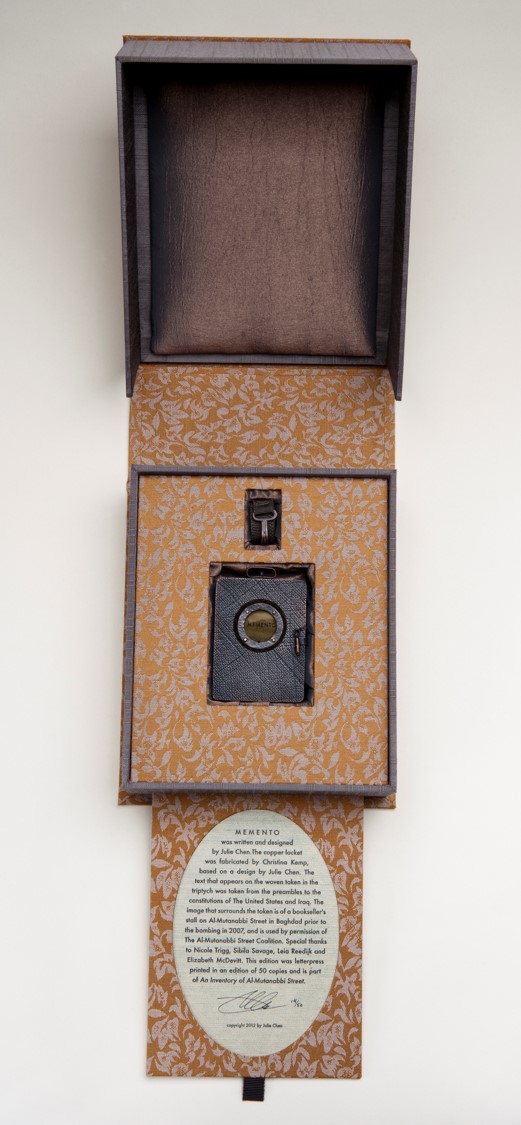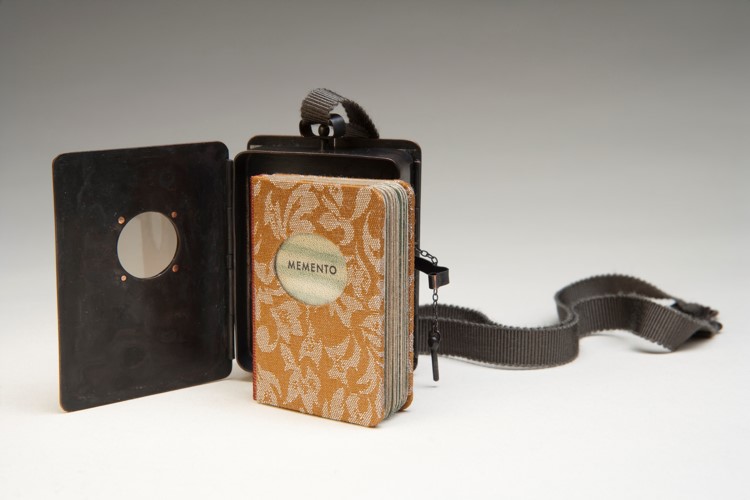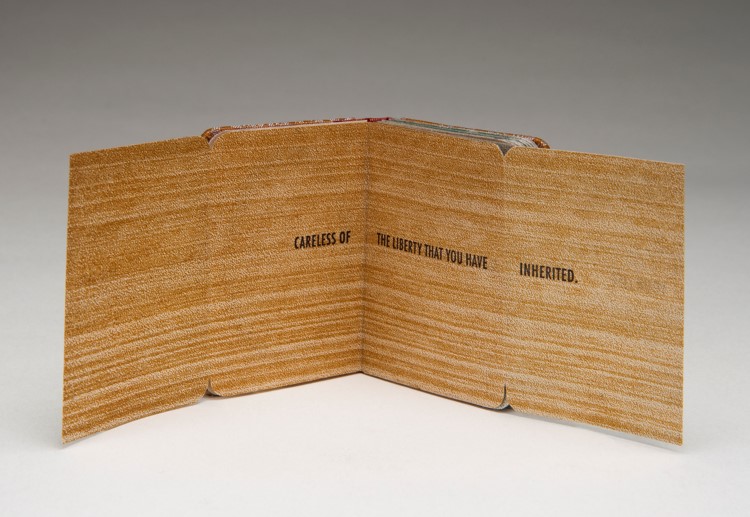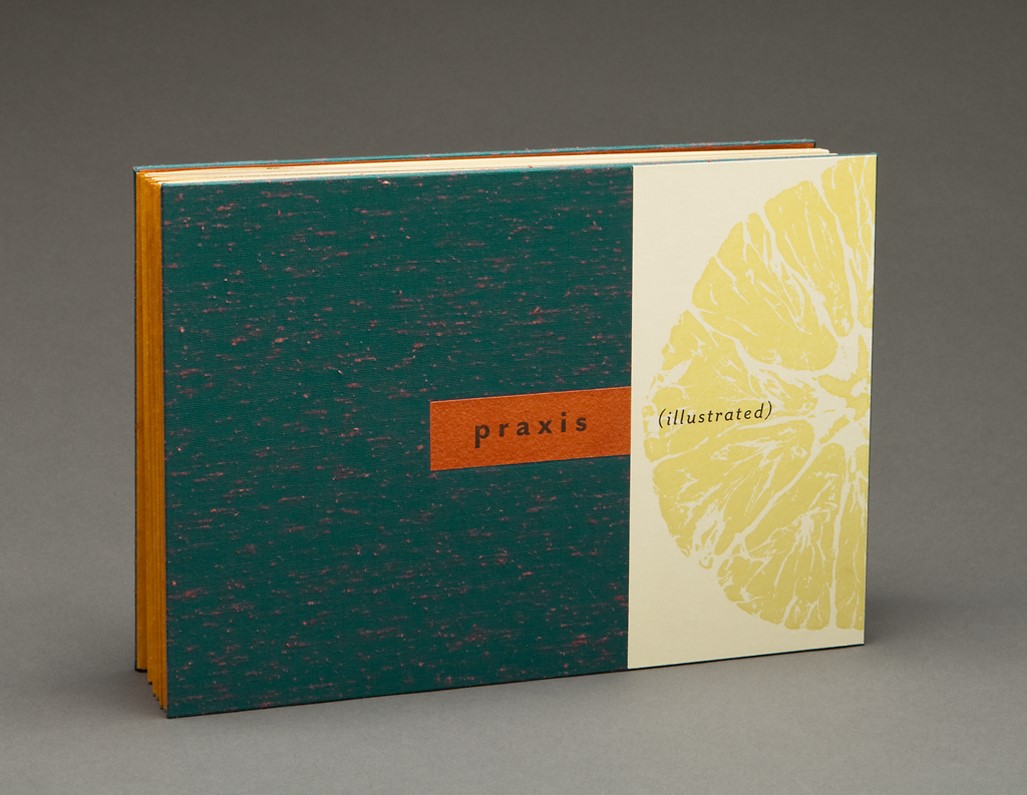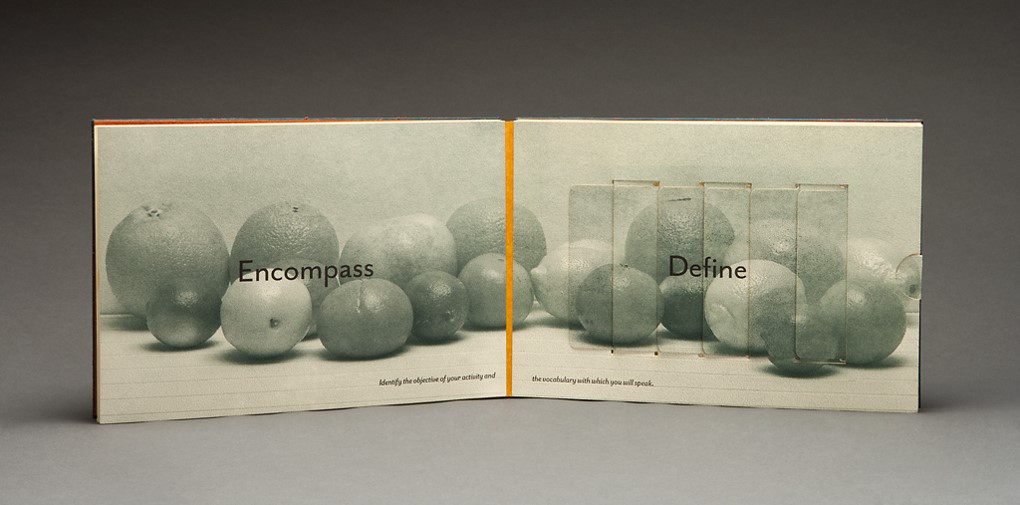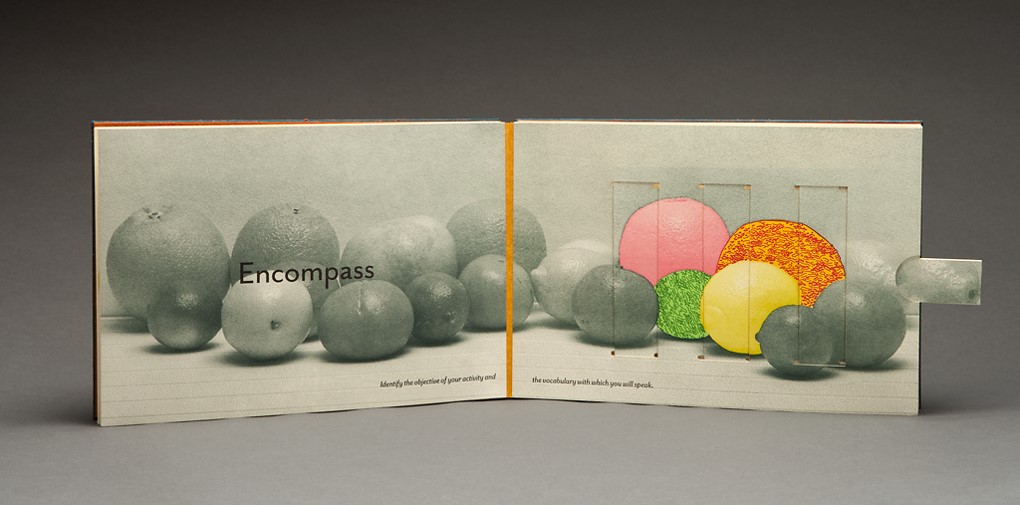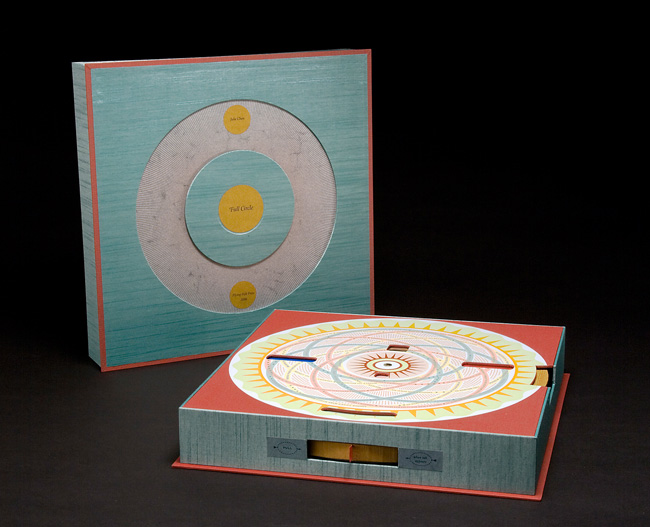Episode 10: Unreadable Books
Hello and welcome to Books in the Wild, the podcast about exploring books. I'm Keri Schroeder.
Today’s episode is all about unreadable books. What does it mean to read? How do we garner read meaning from text written in a language that we do not understand? Today We will talk about the process of reading, and I have some fun historical and contemporary examples of indecipherable books.
But first, I want to announce a momentous occasion: Books in the Wild has reached its tenth episode! That's like 70 in dog episodes!
And we are now reaching the end of 2017, and the beginning of a new year, which means new hosting fees.
To be candid, with hosting fees, equipment and research materials, it costs me about 4 or 500 dollars a year to produce Books in the Wild, which of course doesn’t include any of my time or the donated time of my lovely friends and colleagues that I have pestered into appearing on this show. And though I certainly have no illusions of ever monetizing this podcast, I promise to never try and sell you mattresses or underwear, it would be nice if this labor of love was a little less labory. If you enjoy this podcast, and would like to see it continue, your support can be as simple as just reaching out, writing a review on Apple Podcasts, or sharing Books in the Wild with friends. Public reviews bump up the visibility for this podcast so that it shows up on recommended lists, so that more people can discover it. I will also be adding some new Books in the Wild items on my etsy shop, such as commemorative zines, keychains, and enamel pins as a sort of fundraiser for the upcoming hosting fees. You can find more information at Books in the Wild .com, coyotebonespress.etsy.com or in the links provided in the show notes.
Thank you so much to everyone for your continued support and especially to those who have reached out with feedback, or just to say Hi. It really does mean alot to me.
And now let’s get into some Unreadable Books!
Imagine yourself as a young child, before you were fully able to read. Perhaps you were thumbing through books from your parents’ shelves, or picking up the most interesting looking covers at the library. Imagine yourself opening a hefty hardcover book, almost too big to carry, and flipping carefully through the pages. You are already familiar with your own favorite books, ones with bright illustrations and short sentences. You know that Where the Wild Things Are is different than Green Eggs and Ham, and so you know that books can have many different stories. You know that books have meaning. The pages in this dense hardcover though are thinner than you’re used to, and jammed full of such tiny letters, and where are all the pictures? You recognize a few words here and there, but the rest is daunting. You skip around looking for clues, looking for pictures and trying to connect these unfamiliar words to the words you know. If you could only crack the code, all the book’s secrets would be revealed.
Books themselves hold a position of authority, whether the meaning of that book is clear to us or not. One commonality that all writing has, is that someone at some point felt like it was worth writing down. One writes down things that they do not want to forget, or to communicate with others, or to make sense of a story or idea that is in their head. And that’s just step one to making a book. Next you have editing, typesetting, layout and design, printing, collating, sewing, binding. It is the process itself that imbues the book with some of its meaning. There aren’t really any accidental books - a book means that someone out there felt that the content had significance.
But what if a book’s meaning was purposefully hidden from its reader? How do we interact with a book if traditional methods of reading do not work.
First, let's consider how we read. In episode 1 of this podcast, we talked a little more more in depth about reading, but in a nutshell, reading is a cognitive process in which our knowledge, senses, and thinking skills all work together to decode a series of symbols to derive meaning and information. And in an even tinier nutshell, reading means that our eyeballs and brain have been taught to the stuff we see to the stuff we say. But of course, this type of decoding and correlation isn't as easy as it seems. To be fluent in a language, you must be able to not only recognize the individual letters and symbols, but how they combine together to make words, and then understand what those words mean, and then comprehend the order of words to derive the meaning. Then you need to somehow figure out all the different tones and nuances and idioms of a language, like for example, you would need to somehow know that when I said “in a nutshell”, I really meant “to summarize” and there are no actual hard external kernel coverings involved.
Written language can be composed to convey messages at many levels. These messages can range from the purely functional, to the depths of abstract artistic expression. How do you know what is what? It isn’t actually always clear.
Let’s consider the book Animal Farm by George Orwell. It is a story about farm animals banding together to rebel and overthrow the human farmers, then they start betraying each other and pigs start wearing pants. Animal Farm is also about the Russian Revolution and subsequent rise of the Soviet-Union and a critique of Stalinism. One of these story lines would be apparent to anyone who is even semi-literate, the other story line would really only be apparent to those with the correct combination of historical knowledge and critical thinking skills. You would need to recognize these words, these characters as not only what they are literally representing, but also what they are symbolically and allegorically representing, in relation to a historical event with which you are familiar enough with to even make the connection.
So, how do we even begin to comprehend and decipher symbols? Are symbols universal? Yes, no, kind of, maybe, sometimes, are the answers. There are over 6,000 languages out there, some more common than others, some are dead languages, some are exclusively oral languages while others have corresponding writing systems. Then within those languages you’re going to have various dialects, accents, and other regional and cultural differences.
There are usually some reliable commonalities in most languages, because all symbol systems are a created by humans. So, in order to consider universal symbols, we need to think about universal human traits, needs, and experiences. Let’s say we were living in a cave before language was invented, and needed to communicate to our cave neighbor. We’d probably develop symbols for concepts like me or you, the objects we see around us, maybe that bright burning thing in the sky, and what happens when that bright burning thing sets, maybe we need to count how many of a thing we have in our cave, or explain directions to your cave. We visually express things from our environment through pictorial representations, like if you wanted to show an ox, maybe you’d draw a picture of an ox. Then over time, this ox becomes more and more simplified and more abstract until it looks like a few lines for a head and maybe horns, then eventually just turns into a letter A and is intermixed with other symbols to create a code to be used in different combinations to express even more complicated ideas and concepts. There are so many potential variations, that as these characters become more abstract and less representational, the fewer the number of people there will be who can understand it.
And so how and why would one choose to make a book that cannot be read by known traditional methods? And furthermore, how can we read a book that cannot be read? How can unreadable books still retain meaning and evoke reactions from readers?
Let’s say that you have just purchase a crate of old, forgotten books from the storage of a defunct rare books seller. You sit down in your office, excited to pry open the crate like a child on christmas. You open the crate and sort through worn codices and tattered manuscripts. You inspect each book, probably first looking for the title and author, then maybe flipping through the pages to inspect for damage or marginalia. You’re searching for clues to help you decipher the book’s meaning. Some titles you may be already familiar with, and others you may not be, but by reading the title and a few pages, you might be able to get an idea about what the book means. You can probably piece together a lot, even without being able to fully read the book - is the book heard toward children? Is it a cookbook full of recipes? Are there illustrations? Is it finely bound, or just stapled together? What language is it written in? Is it printed or handlettered? All of these characteristics can be combined together to create a fairly decent hypothesis on the books meaning and content.
But then you come across a worn vellum cover, unmarked. When you open the book, there are colorful, strange illustrations and script writing that is unlike any language you’ve ever seen. There are botanical drawings with text nearby that you assume are descriptions of these otherworldly plants, whimsical and eerie human figures, and circular charts that look astrological. Some zodiac signs you recognize, like the fish pisces and a bull taurus. But why are there baby heads on those flowers? And what are those women doing in that fountain? There is accompanying text, but you are unable to read it. It is fluid and decorative, but not overly ornate. Some pages are numbered, some are not. Some have long strings of text that span the length of the page, some are broken into columns that resemble a recipe or perhaps a list. The book feels important, it feels full of magical secrets that could be revealed if only you could crack the code.
The book I am describing, and whose meaning has eluded readers for centuries is Beinecke Cipher Manuscript 408, also known as the Voynich Manuscript.
As you may have guessed, the Voynich Manuscript is an unreadable book. It has had a resurgence in the zeitgeist of recent book mysteries. It is in the top of nearly online listicles of weird and esoteric books. It has been a subject of historical fiction in podcasts and films. And you usually find an article written about it every few months by someone claiming to have deciphered it. Which as of today, in December 2017, it has not yet been deciphered.
The manuscript is currently in the Beinecke Rare Books and Manuscript Library at Yale University. It was gifted by rare books dealer Hans P Kraus, after being purchased from Ethel Voynich, the widow of rare books dealer Wilfred Voynich of whom the manuscript has become colloquially named.
Voynich himself purchased the manuscript in 1912, which was amongst a bulk lot of Jesuit manuscripts in Italy, near Rome.. Voynich often dealt with rare books and manuscripts, his specialty being obscure one-of-a-kind finds. This manuscript, however, was more intriguing than most. He personally believed that the item could have originated from English philosopher Roger Bacon and was on a mission to prove it. The manuscript itself is made of parchment, and contains colorful illustrations of astronomical charts, botanical drawings, what appears to be alchemical recipes, and is written in an unknown script. This manuscript, Voynich kept for himself, trying to decipher its meaning until his death in 1930.
The manuscript is unusual for a number of reasons. First, its provenance is convoluted at best. The first recorded history we have of the Voynich Manuscript is a letter written in 1665 about it being sold to Holy Roman Emperor Rudolph II, and it was thought to have been written by Roger Bacon. The letter does not say who sold the manuscript, though some speculate that it could have been 17th century astrologist, necromancer and mathematician John Dee. However, this isn’t likely given that the only real evidence that we have for this transaction is that it would be a really fitting story. After Rudolph II. the manuscript seems to have had at least three different owners around Prague and eventually was hidden away in a Jesuit Library. And as it happens sometimes, a stash of these old manuscripts were sold off as a lot, which Voynich purchased.
The manuscript has been carbon dated and determined to have been made between 1404-1440 which rules out Roger Bacon as its creator. It is written on parchment, which is tanned and stretched calf skin, rather than paper. As you might guess, parchment is a good deal more expensive than paper, meaning the the creator or financeer of the manuscript was wealthy. Or another option is that it was an elaborate medieval hoax specifically made to appear mysterious and rare and therefore valuable.
The other pigments used in the book are primarily white, green, yellow, brown, red, and blue, all were inexpensive, common pigments used in the period.
Usually manuscripts are assembled by several different people, there is a scribe who writes, typically copying from an exemplary master copy, a rubricator who adds ornamental details to the text, and illustrations. Given how intertwined the text and imagery is in the Voynich manuscript, it suggests that they could have been completed by the same hand, or if separate they worked very closely together.
Although the manuscript was created through typical medieval means, the script is apparently an invention of the scribe, as it does not match any known alphabet, and doesn’t appear to have the same hesitation present when copying from a master model. The lack of breaks and hesitation also suggest that it was made by a confident hand written with purpose.
It is this sense of purpose which make the Voynich manuscript one of the most intriguing books of its kind. The mystical illustrations and its resemblance to recipe or diagram format make readers keep coming back to try and decode it.
The manuscript consists of 102 pages, some are numbered and some are not. It has been determined that its current binding is not original, but it is not known what its original binding was. Based on the subject matter of the drawings, scholars have divided the contents of the manuscript falls into six sections: botanical, astronomical, biological, cosmological, pharmaceutical, and recipes. But even though the topics may be recognizable, the specifics are not. For example, the botanical drawings are recognizable because they symbolically resemble plants - there are roots spreading below, stalks growing above, and diagrams reminiscent of flowers or seeds on top. We recognize these images symbolically as plant life, of some kind. There are tight, repetitive linework patterns beside each diagram, some with lines jutting out from a specific area. We can use our best judgement to determine that this is text, most likely identifying not only a specific type of plant, but also specific parts of the plant. The Voynich manuscript contains 113 drawings of as yet unknown plant species, with illustrative color details and what appears to be texts describing it. The astronomical charts have been categorized as such because some constellations are recognizable, it looks similar to other medieval astronomical charts from the time, but there are anomalies. I think that one of the reasons why people have been trying to decode the Voynich manuscript for so long instead of just dismissing it as nonsense is because of it familiar aspects. We recognize some astronomical signs, we see the resemblance of the botanical and biological diagrams to our own known botany and biology. We recognize the patterned repetitive designs surrounding the illustrations as writing - meaning that it is dissimilar enough from drawing that we would consider it a separate component.
It means that although we cannot read, nor understand the language that it shares enough similarities that we still recognize it as writing. We are basically using what we know, what we have seen in other books to make sense of the Voynich manuscript.
According to the Primer of Visual Literacy, “Visual data has three distinctive and individual levels:: representationally - what we see and recognize from environment and experience; abstractly - the kinesthetic quality of visual event reduced to the basic Elemental visual components, emphasizing the more direct, emotional, even primitive message making means; symbolically - the vast world of coded symbol systems which man has created arbitrarily, and to which he has attached meaning.
Let’s use a bird for an example, a dove. And i mean a picture or drawing of a dove, not a real life dove. This is key. On the first level representation Ali you recognize the image as a dove a bird. On the first level you recognize the image is of a bird. On another level, you recognize that it isn't an actual bird, but just a purposeful combination of pigment on paper. And on a symbolic level you might interpret the dove as a symbol for peace or love.
You do not need to be literate to process visual information, but abstract symbols need to be learned in the same way we learn language.
Another such book worth discussing in this manner is the Codex Seraphinianus by Luigi Serafini. Which is another such book, like the Voynich manuscript that no matter how literate, educated, and masterful of semiotics we might pride ourselves in being, the meaning of the Codex Seraphinianus still remains elusive.
Upon first inspection, The Codex Seraphinianus is a large, heavy tome, of around 9x14” and 2” thick. The cover and binding vary according to the editions, but they are all hefty and compared to a lot of oversized coffee table books, nicely bound. When you open the book, you’ll notice that there is no introduction or table of contents, at least not in any language that we can read. The Codex is beautifully, painstakingly illustrated, and like the Voynich Manuscript, filled with many diagrams and what appear to be biological and botanical drawings. The type is not perfect, it looks handwritten, but there are repeated characters in the same way that our letters might look similar enough to recognize it as certain letters but are not identical.
The drawings are surreal. They are almost recognizable, but there is something uncanny about them that prevents us from fully comprehending what we are seeing. It is highly organized, and therefore purposeful. There are figures that are human-like, but they differ in that they have machinery replacing various body parts, or elaborate alien costumes. There is flora and fauna that is otherworldly but similar to those which we might be familiar. There are images that are in sequence, which makes us attempt to create a narrative.
And this is a rather long quote I am going to read, but it was so good I wasn’t sure where to cut it. This is what Italian magical realism author Italo Calvino says of the Codex Serafinianus: In the beginning, there was language. In the universe Luigi Serafini inhabits and depicts, I believe that written language preceded the images: beneath the form of a meticulous, agile, and limpid cursive (and strength lies in admitting it is limpid), that we always feel on the point of deciphering them just when each word and each letter escapes us. If the Other Universe communicates anguish to us, it’s less because it differs from ours than because it resembles it: the writing, in the same way, could have developed very similarly to ours in a linguistic forum that is unknown to us, without being altogether unknowable.… Serafini’s language does not distinguish itself only by its alphabet, but also by its syntax: the objects of this universe evoke the language of the artist, such as we see them illustrated in the pages of his encyclopedia, and are almost always identifiable, but their mutual relations appear psychologically disturbed to us by their unexpected relationships and connections.… Here is the conclusive point: endowed with the power to evoke a world in which the syntax of things is subverted, the Serafinian writing must hide, beneath the mystery of its indecipherable surface, a more profound mystery touching on the internal logic of language and thought. The lines that connect the images of this world tangle and cross; the confusion of the visual attributes gives birth to monsters, Serafini’s teratological universe. But the teratology itself implicates a logic which appears to us to, turn by turn, flower and disappear, at the same time giving us the sense that the words are carefully traced back to the point of the quill. Like Ovid, and his Metamorphoses, Serafini believes in the contiguity and permeability of all the domains of being.
Even though we cannot read the book, there are certain biblio traditions that are kept in place to guide us through Serafini’s book. In the bottom corners of the pages, there are small markings. Because this is usually where we tend to number the pages of our own books, and because these markings, although foreign still seem to create a sequential pattern, we can deduce that this is a numbering system.
There are also arrows and lines next to images that indicate measurements, however, they are in increments that I don't understand. It reads like an encyclopedia to an alien planet. There is an entire world present within these pages, whose meaning could be fully realized in an instant, if the tools were available to us.
Codex Seraphinianus is not another lost medieval text. It was created by Italian artist Luigi Serafini between 1976 and 1978 and published in 1981. Serafini was 27 years old at the time, purposefully playing with the ideas of combining text and image to create a semblance of meaning. Of the writing, Serafini says, “ the Quest for this new alphabet seem to me to be the most urgent thing that had to be done. Actually I had to invent one that suited my hand. So I began by scribbling lines that twisted and curved and Curly Q's and arabesques. And from that tangle of ink I slowly distilled calligraphy complete with upper and lowercase letters, punctuation and accents. It was script that contains the dream of many other types of script”.
Serafini worked on the Codex for 3 years, most of which he spent with a white cat perched on his shoulders. A cat, to which Serafini has attributed authorship of the Codex. After the cat followed him home one night and Serafini took him in, he said the cat would clamber upon his shoulders, his tail swinging on Serafini’s chest while he drew and the cat dreamed. Years later, Serafini said “How else could I account for so many drawings and so little time, although I do realize that all this might sound rather bizarre. I must confess that the true author of the Codex was the white cat, and not I, even though I've always passed myself off as being the author, whereas I was merely it's manual executor. Since for copyright reasons, I could not make the present confession until now.”
So we have covered a book of a truly mysterious origin, and a book that was written psychically by a cat. Now I have a couple of contemporary examples by book artists, making books that are not able to be read in a traditionally manner, and yet whose works still feel heavy with meaning.
You find yourself in a room. Hanging on the walls are prints, broadsides of beautiful handmade paper, and free flowing dark indigo watercolor imagery. There is finely letterpress printed text in columns on each. At least, you recognize as text although you can’t quite make out the words. The text feels familiar and foreign at the same time. And yet, coupled with the meticulousness of its presentation, the meaning although allusive feels heavy, feels purposeful and profound. It seems to transcend language, tapping into something deeper, tapping into that something that gets lost the moment you let those feelings become words.
Heather Peters is an artist and writer based out of California. The work I mentioned is a book art installation called Meaning is the Moment Captured. The printed alphabet in question, is indeed a working alphabet created by Peters. In a printshop there exists something called a Hell box - which is a receptible or bin where damaged, unsorted metal type gets thrown. Peters carefully sorted through a hell box, and collected one of each discarded letter. In order to free them from their typographic constraint, Peters then remelted the metal type and quickly cast them into water. The letter’s new shape was then photographed and digitized into a usable font. Which then was typeset and made into polymer plates, which were then used to print.
In her artist’s statement, Peters says that she sees her work with the materials as an investigation into the ways of telling a story, a way to use divination to find meaning in everyday existence, because it is believed by some historians that some of the earliest forms of writing developed through fortune telling methods that were believed to communicate with a world of spirits beyond us.
From Peters’ statement “A shared alphabet gives meaning the ability to transfer, but what if we took that burden away from a set of letters, specifically hard worn lead letters, consigned to a hell box in a busy print studio? Is there a way for the viewer to experience the awe of the beautiful paths of communication and the means of the collective preservation of knowledge we have, as humanity, created without being distracted by comprehension.”
After the metal type was sorted, melted down, and recast into a new alphabet. Peters continues, “I wondered, would we be able to glean the nature of meaning, if not the specifics? Does the inner nature of the letter become a thing revealed once the effort of casting the melted lead into a specific shape is taken away from it? I argue that materials are a language in themselves, a grasping way for humans to transfer meaning. Just as the ancient study of alchemy allowed for the discovery of artist materials that in turn created bodies of work that continued the study of matter under different titles.”
The relationship between visual arts and alchemy is strong and long-standing. Alchemists attempted to learn the secrets of materials, chemically, physically, and spiritually. And although today the disciplines of chemistry and spirituality are fairly removed from each other, it wasn’t long ago they were intertwined. It was alchemists who developed paint pigment recipes and other art making materials. Even today alchemy is often used when discussing the spiritual or emotional impact that can be found in visual and literary arts, that depth that extends beyond just the visual information.
Next, let’s journey to the middle of the desert. You’re walking into a vast, seemingly endless place. Even though you know you are on earth, the desert will always feel extraterrestrial. There are red, spiral rocks jutting out of the ground. There are crooked, hunched trees with talons for leaves and armored plates for bark. You see something reflecting in the sun, just a little ahead of you. As you get closer, you are able to take in the unbelievable scene. There is mechanical wreckage, all gleaning silver and twisted electronics, of what appears to be a flying saucer. As you examine the wreck, you stumble upon a strange book. Not so strange, as you did just recognize it immediately as a book, but certainly unlike any you’ve ever seen before. The cover is solid, heavy, like wood, with unrecognizable symbols and writing etched into it. Inside, each page is filled with ornate and meticulously detailed diagrams and instructions for machinery. Lavish maps and charts, with topographical details, and color-coded keys. The writing is structured, purposeful and profound. You know all this, and yet you cannot read a single word of the book.
Timothy Ely, is a contemporary American artist, and a heavy hitter the book art world. Ely creates beautifully intricate one-of-a-kind manuscript books. They usually are in the form of either the Planetary Collage Standard Binding or the Planetary Collage Drum Leaf binding, both structures of Ely’s own design which allow for maximum surface area on the both the pages and the covers to be written, painted, and illuminated. Ely’s books read like architectural textbooks, celestial and topographical maps, and grimoires all combined into one. They are filled from cover to cover with diagrams, charts, and a mysterious writing system Ely calls cribriform. The fact that the books are uniques, means that they were not intended for a large audience, but instead hold precious secrets. There is a power in Ely’s work that imply that the information presented could gift you with the information you would need to transport you to another planet, build world-changing technological inventions, or harness esoteric magic, if only you could crack the code.
From Ely’s artist statement, “alchemy is a secret art, and I have always liked the persistent idea that my work is occluded. Personal transformation is secret, and even our attempts to reveal what goes on within the self are often, or always, beyond words.”
Ely uses traditions from alchemy in his approach to art materials. He continues “I seek ways to get materials to transform or for surfaces to respond to my drawing methods. Acting upon pigments with water or heat or grinding can change their character. I size the paper with glues or glaze a mix of marble or plaster into areas that seem too restrained. These surfaces can be delicately carved into and worked with additional information until it all reads.”
Like the medieval Voynich Manuscript, Luigi Serafini’s Codex Seraphinianus, and Meaning is the Moment Captured series by Heather Peters, Tim Ely’s work in unreadable by traditional methods, and yet they all still exude meaning.
I want to make special note of Ely’s quote about reworking his books, “Until it all reads… “ Artist’s books make use of all of itself to convey its meaning. This goes beyond aesthetic preferences or graphic design. It implies that there is intrinsic meaning in the materials themselves. If this sounds a little woo-woo for you, let’s pretend you received a love letter, you know from someone you would want to receive a love letter from. Would it feel differently if you received a handwritten letter on stationery than if it were typed up using a default font, and printed with a home office printer? I think that they feel different. And I would argue that it doesn’t necessarily have to do with time or effort, because at least at my house dealing with my finicky cheap printer takes me just as long if not longer than just handwriting the thing. The human presence is stronger in letters and books and art and food and just about anything, if it has been touched and created by a human hand.
Many disciplines have attempted to analyze and uncover where exactly meaning comes from in the visual arts, and how visual art communicates. Gestalt psychologists have been striving to understand how we organize and perceive meaning in an apparently chaotic world through principles of grouping. For example, we tend to group items together based on their proximity to each other or visual similarites. We also tend to complete shapes and patterns in our mind that might be broken or inconsistent, which is why we see a circle with breaks in it, we recognize as a circle with breaks, and not several isolated curves. It is Gestalt psychology that taught us that “the whole is other, or greater, than the sum of its parts”.
And going back to the Primer of Visual Literacy, the author states that “the last level of visual intelligence is possibly the most difficult to describe and may in the end be the most crucial to the development of literature visual literacy. It is the under structure, that abstract, elemental composition, and therefore, the pure visual message.” In other words, we analyze and organize and interpret this complex system of symbols and imagery in order to understand its meaning, and yet there is something else beneath that. A skeletal visual force, a basic composition of elements that can evoke a response from us. There is an elusive but very real, pure visual energy.
Unreadable books play with our expectations and our knowledge of how books usually function. There are parts that we can understand, similar patterns and traditions that are maintained. The books intrigue us, invite us to read them. Then we are faced with a barrier that we cannot fully penetrate, but which offers enough cracks and breaks to let some of the light of hope in that we will be be able to one day understand. These books are simply not able to be read by traditional methods of reading, but it does not mean that they are unable to communicate with us as readers. Instead of relying on just text and imagery to extricate meaning, we learn to read the whole book from its materiality, visual energy, composition, and personal symbolism. It requires more of ourselves to read them, and therefore, further fuels the expectation that once deciphered, their secrets will be life-changing and profound.
Thank you for listening to Books in the Wild. Please visit booksinthewild.com for links and show notes. If you’d like to contact me, I can be reached at booksinthewildpodcast@gmail.com or you can follow me at booksinthewildpodcast on instagram or Facebook.
Be sure to check out The Paper Carnival, my collaborative new project with Julie Chen of Flying Fish Press. The Paper Carnival creates bookish gifts and collectibles for book artists by book artists, or for normal people too. Our first release is a series of book art themed enamel pins, to wear on your jackets, printing aprons, bags, or I could keep naming things, but I’ll spare you. Visit thepapercarnival.com to get some of your own! You can use coupon code BOOKS IN THE WILD for 15% off your order!
You can also visit CoyoteBonesPress.etsy.com for more book art-related items. All purchases from either site, will help out this podcast.
For more information about Unreadable Books, I recommend A Primer of VIsual Literacy by Dondis, What We See When We Read by Peter Mendelsund, Ways of Seeing by John Berger
To learn more about the Voynich manuscript, you can see the whole book digitized online on the Beinecke Library at Yale University’s website
To learn more about the Codex Seraphinianus, I have included some links to articles, and there is currently a relatively inexpensive reprint available if you want a copy for yourself
Heather Peters and her work can be found at societyofhermits.com, and you can follow her on Instagram @woundedgeneral
You can view Tim Ely’s work on his website timothyely.com, and much of the information I read on this episode came from the catalog 8 Books by Timothy C. Ely published by Abby Schoolman Books
Thank you again for listening.



